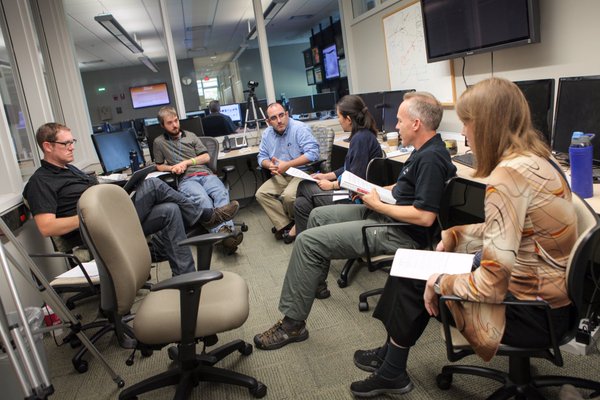This week saw the first full week of testing in the NOAA Hazardous Weather Testbed directly related to FACETs research and development efforts. Operational forecasters from NWS offices in Norman and Pittsburgh worked with scientists from NSSL, University of Oklahoma’s Cooperative Institute for Mesoscale Meteorological Studies (CIMMS), the NWS Warning Decision Training Division, and NOAA’s Environmental Sciences Research Lab (ESRL) to test software and techniques to generate probabilistic hazard information (PHI) utilizing Hazard Services software. Hazard Services is a software package being developed for NWS forecasters to use to generate hazardous weather forecasts. This week’s experiment thus not only tested the concepts of how forecasters can produce PHI guidance – it also enabled scientists and software engineers to evaluate the process by which it can be done using this software which will eventually be operational in the NWS. Two additional weeks of this experiment will be conducted later in May and in early June.

This upcoming week (May 9-13) will see the first week of the PHI Prototype Experiment. This experiment will bring together NWS forecasters, emergency managers, and broadcast meteorologists from around the country to work with physical and social scientists to test how PHI can be generated and utilized during severe weather events. We’ll be sharing updates from the experiment (and more information about FACETs and PHI) as the week progresses.
